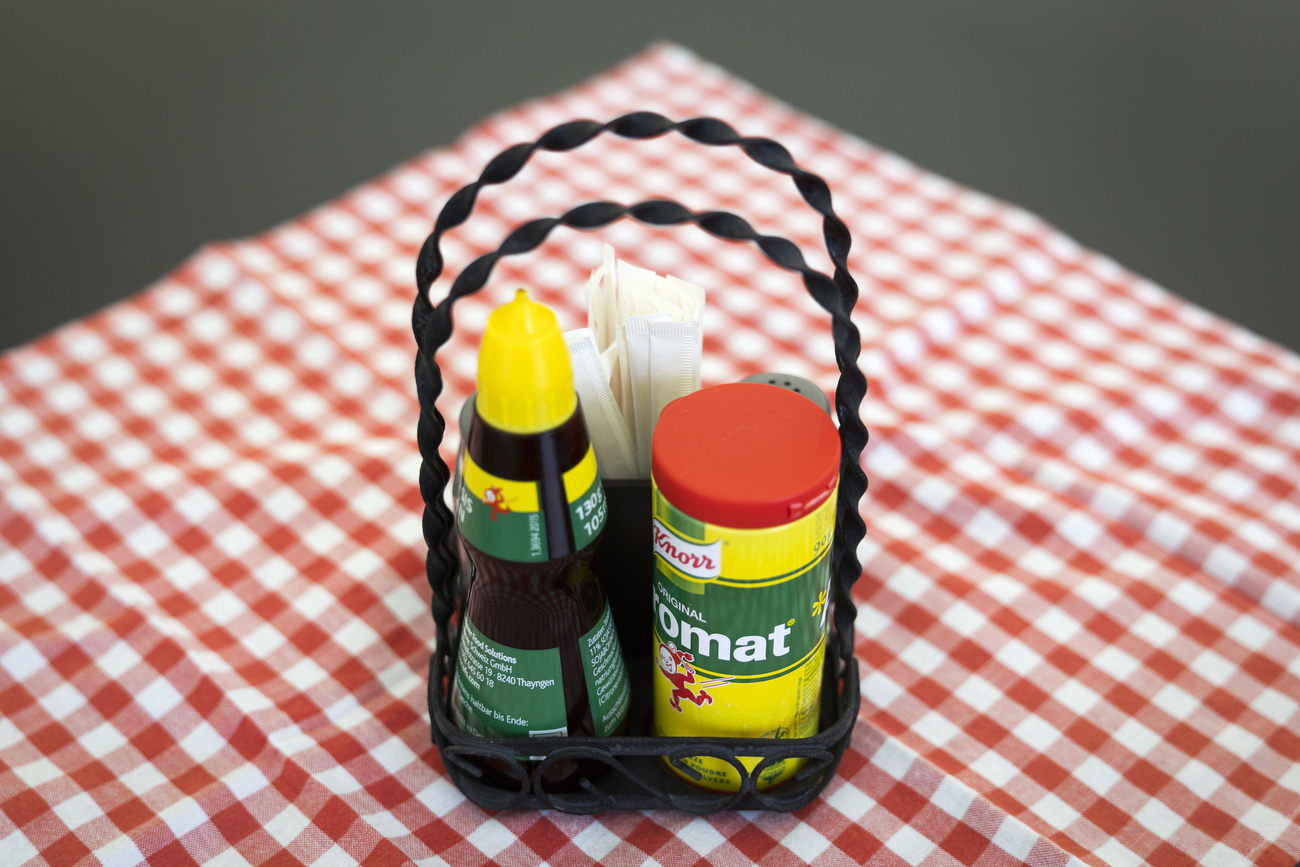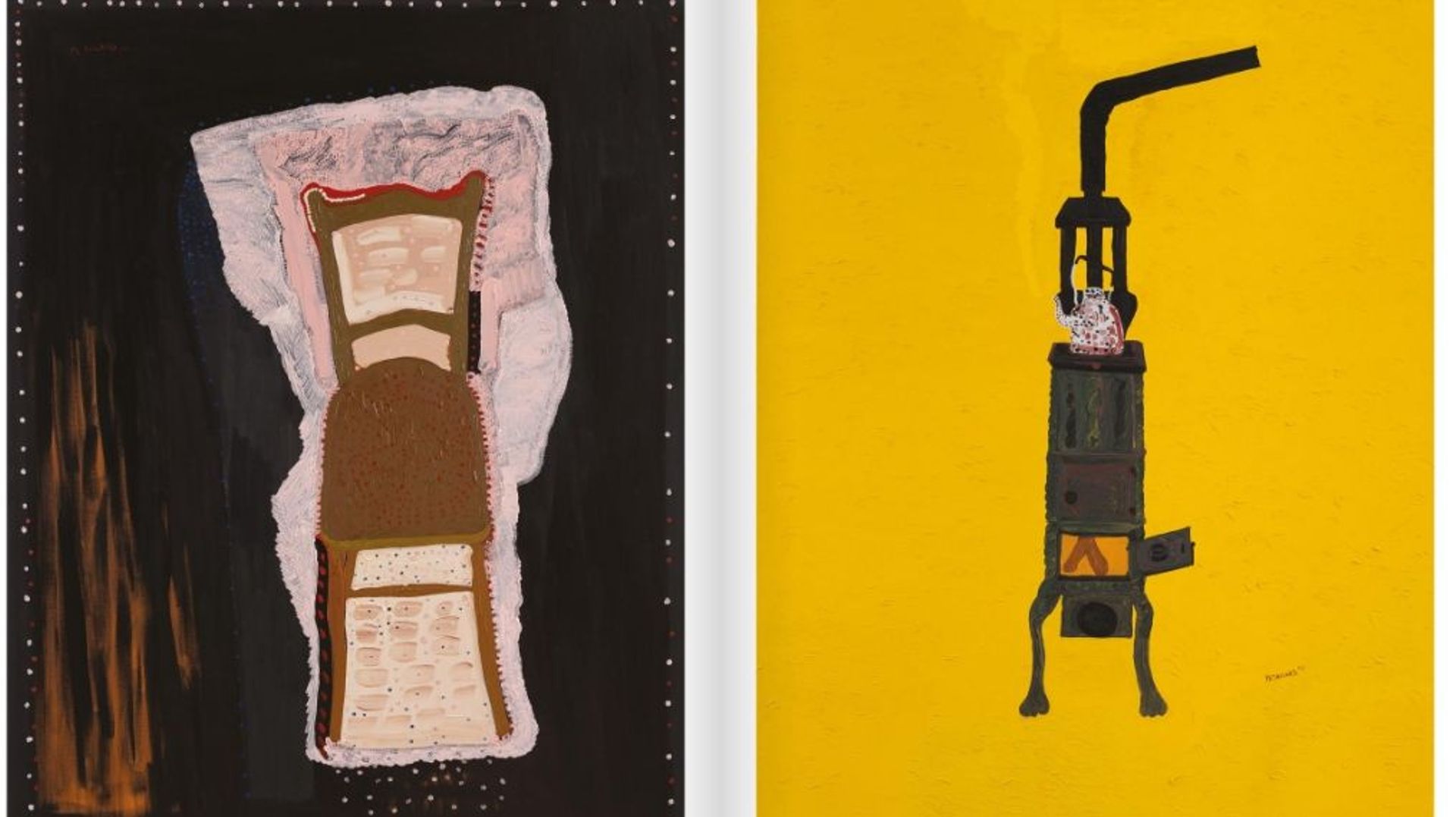
Aromat: on (almost) every Swiss table for 70 years

The most Swiss spice mix has recently turned 70 years old. The accidental birth of a product that has become one of the symbols of Swiss cuisine.
When one thinks of Swiss food, fondue, raclette, various cheeses, and chocolate come to mind. There are also those who remember Alpine macaroni (who said you can’t combine pasta, potatoes, cream, cheese, onions and apple purée?) or the infamous Casimir rice (rice, chicken, curry, pineapple – with some even adding fruit salad and bananas).
Only the most experienced, however, will mention Aromat. It’s not a dish, it’s true, but it’s a staple on Swiss tables (especially those in German-speaking Switzerland). It is a condiment consisting of a mixture of spices, herbs and salt, coloured yellow with turmeric powder. Perhaps following food trends, it has recently become vegan, and lactose has been removed from its composition.
Aromat is owned by Knorr, itself controlled by Unilever, and has recently turned 70 years old. The company, which owns the original recipe, produces 3,000 tonnes a year, half of which remains in the Confederation, while the other half is distributed abroad, mainly in European countries.
Its history is linked to the Second World War: Knorr is a German company, which in 1907 opened a branch in Switzerland, in Thayngen, in the canton of Schaffhausen, not far from the border. In 1940, the parent company, due to the ongoing conflict, was no longer able to supply the Swiss branch with meat extract, which was essential for the production of soups, bouillon cubes, and so on. And it was this problem that gave the Thayngen site a breakthrough, as we read on the Swiss Culinary Heritage website: “According to a book published on the occasion of Knorr’s 100th anniversary in Switzerland, the Thayngen site took this opportunity to assert its difference and independence. From then on, it focused on the Swiss market. This led to the creation of new products specifically for the Swiss Confederation, in particular chicken broth, Stocki freeze-dried mashed potatoes and, indeed, Aromat.”
Initially, this seasoning, launched in 1952, was sold in the form of a cube and under the unattractive name ‘Pflanzenextrakt’ (transl. from German ‘plant extract’). A year later it became Aromat – a name that was considered more inviting – and the cube became a powder, easier to sprinkle on food. It started out as a salad dressing, but soon entered most Swiss homes and restaurants north of the Gotthard. It is less common in the canton of Ticino, however, due to the Italian and Mediterranean influence where oil, vinegar, salt and pepper are the only salad dressings.

More
Newsletters
Maggi Würze: even more Swiss
Not only Aromat graces Swiss tables north of the Alps; there is also another seasoning, produced by the 100% Swiss company Maggi (founded by Julius Maggi, born in Frauenfeld in the canton of Thurgau in 1872). It is a liquid seasoning, the Maggi Würze, whose small brown bottle with a yellow-red label has become iconic. The Würze is even older than Aromat: it hit the shelves in 1886, shortly after the first pea and bean soup powder, invented by Julius Maggi himself. The liquid flavour enhancer contains vegetable (wheat) protein extracts and flavour enhancers.
Two ingredients which, on the one hand, reinforce the idea of an unimaginative Swiss cuisine, but which, thanks to a quick online search, turn out to be widely used and very versatile. It is even whispered that one of the best-kept recipes in Swiss history, that of the sauce for the famous basket chicken at the Polet Burg restaurant in Attinghausen, canton Uri, has Aromat as its main ingredient. This information has never been confirmed or denied.
A return to glory?
Aromat – perhaps because it is better known – is making a comeback (like many other ‘old’ or ‘out-of-fashion’ ingredients in recent years), thanks also to social media:
there are hundreds of ‘memes’ about it and recipes that include it. For example, as a sign of changing times, it is widely recommended as an excellent topping for avocado toast. There are also those who swear it is great on pasta in bianco. We trust them, but haven’t had the courage to try it.
In short, “de gustibus”… But if you ask a Swiss expat which flavours of home they miss the most, there is a high probability that they will answer ‘Aromat!’ It is often found in their suitcases when they return home from a Swiss holiday. Unless they live in South Africa, where it seems to be very well known and popular.
Translated from Italian by DeepL/amva

In compliance with the JTI standards
More: SWI swissinfo.ch certified by the Journalism Trust Initiative































You can find an overview of ongoing debates with our journalists here . Please join us!
If you want to start a conversation about a topic raised in this article or want to report factual errors, email us at english@swissinfo.ch.